Daniele Barbaro was a Venetian cardinal, born in 1514 and dying in 1570. During his lifetime, Barbaro translated the works of Vetruvius, a Roman architect, and was known to be a patron of architects. Particularly, he patronized the Venetian architect known as Andrea Palladio. Barbaro, a bit of a linguist, also served as ambassador to the court of Elizabeth I of England. He may also have served as ambassador to Edward VI. Pleased with his service, Elizabeth allowed Barbaro in 1560 to quarter his personal arms with Tudor roses.
Daniele's brother, Marcantonio, was born in 1518 and outlived his brother by several years, dying in 1595. A diplomat, he served as ambassador to France from 1561 to 1564. Marcantonio was nominated for the position of Doge in 1570, 1578, 1585 and 1595. Marcantonio, educated at the University of Padua, became Rector during his final years and served the university at the same time as Galileo Galilei was a professor.
In 1577, a fire devastated the Doge's Palace. Palladio was approached to perform restoration work and new construction. Already Palladio had been the architect for several palaces and churches in Venice, and had a good reputation. Palladio designed apartments on the first floor (second floor, to Americans). But did he work on that hallway by the Porta della Carta? Is the relief that appears to be a Tudor rose a nod to the Barbaro brothers, who were influential in Venice and supported Palladio’s career, or is it mere coincidence? The answer is not easily found, though the evidence is compelling.
Here are more photos Heather took at the Doge's Palace:
- Porto della Carta
- Porto della Carta
- A view of the Basilica San Marco
- The Staircase of Giants
- The hallway
- The Tudor rose adornment
Heather R. Darsie lives in the United States with her family and three parrots. She works in the legal field, with a focus on children. She obtained a Bachelor of Arts degree in German Languages and Literature, then a Juris Doctorate in American jurisprudence, and studied abroad in Costa Rica and France. Heather has always loved history. She first became acquainted with Elizabeth I when she was in middle school and chose to write a book report about her. Since then, she has always held an interest in the Renaissance and its numerous enigmatic citizens, with particular focus on the history of England and Italy. She is currently working on a book on the heraldry of Tudor women and is also researching Anne of Cleves.
Sources and Suggested Reading
- Haynes, Alan. “Daniele Barbaro: a Venetian Patron.” History Today, Vol. 25, Issue 12. December 1975.
- Cumming, Robert, ed. My Dear B.B.: the Letters of Bernard Bereson and Kenneth Clark, 1925-1959. United Kingdom: TJ International (2015).
- Radcliffe Rogers, Barbara. “Exploring the Doge’s Palace in Venice: a Visitor’s Guide.”
http://www.planetware.com/venice/doges-palace-i-vn-vd.htm Retrieved 1 March 2016. - Grendler, Paul F. Renaissance Education between Religion and Politics. Aldershot: Ashgate (2006).
- Suriano, Michele; Layard, Sir Austen Henry; Barbaro, Marc Antonio. Despatches of Michele Suriano and Marc' Antonio Barbaro, Venetian Ambassadors at the Court of France, 1560-1563. Published 1891.
- The author recently went on a trip to Venice, where she saw the alleged Tudor rose. This shows the importance of taking in every detail and the significance of symbolism during the Renaissance.


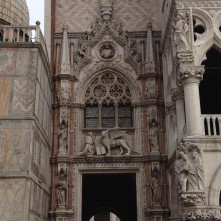

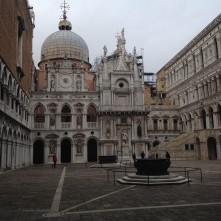
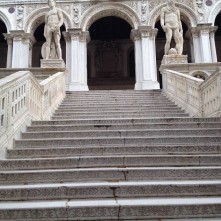
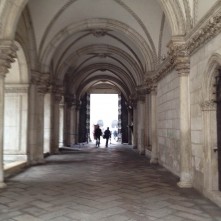
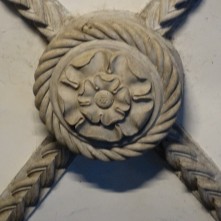


Good afternoon. I have just read your article with great interest . I am currently watching a DVD by Dr David Starkey
On Henry VIII and he is spending time in the Venetian archives which is fascinating . I live in Venice and some time ago I noticed the Tudor rose on the sides of a well in the cloisters the church of San Francesco De la Vigne and also the well in the Ghetto . I know an art historian and asked her if she knew why. She is Venetian and said it was also a popular Venetian symbol.Im not convinced of this and wondered if you have any more informAtion .Thankyou. Warm wishes. Fay Hart